|
The art of writing letters seems to have vanished since the arrival of more sophisticated and faster ways to communicate. Sadly, emails and texts have replaced the more intimate and expressive pen to paper. When I was very young, writing and receiving letters was exciting. I remember the first box of stationery given to me, the feel of the onion skin paper in my hands, and the thrill that it would capture my thoughts and possibly immortalize me. And I loved the idea that someone might keep my letters and reread them every so often. Yes, at the age of eight, I was a true romantic and a bit dramatic, and I suppose I still am! So, when I received two beautiful bottles of Pinot Noir along with an elegant box of custom stationery from Belle Glos Wines, I was over the moon! The prospect of pouring a glass of opulent wine, writing a letter again, and mailing it to someone made me giddy! Fifth-generation Napa Valley winemaker Joe Wagner created Belle Glos Wines in 2001, inspired by his grandmother, Lorna Belle Glos Wagner, co-founder of Caymus Vineyards. No stranger to wine, Joe knew by the age of 19 while working alongside his father at Caymus Vineyards that he would carry on his family’s winemaking legacy. Motivated by his grandmother, an avid Pinot Noir lover, Joe decided to focus on vineyard-designated Pinot Noirs from California’s best coastal regions. He has five vineyard sites that produce wines expressing the uniqueness of each vineyard. Recently, Joe and I chatted by way of a virtual meeting, and I asked him to elaborate on his grandmother’s influence in his life. Joe: “As you may know, my grandmother, Lorna Belle Glos Wagner, was a very important person in my life. When I crafted my first wines, naming the brand Belle Glos became the obvious way to pay tribute to her. She was a strong family matriarch, worked hard, was always positive, and loved Pinot Noir. She has always been at the heart of my family, so it only felt right to do something in return to show our appreciation and gratitude towards her. Like the brand itself, Belle Glos Love Letters is an ode to my grandmother and what she embodied; elegance, love, strength, and purity. I am proud that we can still celebrate her legacy eternally with every glass of Belle Glos poured or love letter sent in the mail.” Belle Glos Love Letters is a collaboration with luxury stationer Dempsey & Carroll founded in 1878 in New York City by engraver John Dempsey and businessman George D. Carroll. This limited-edition kit features custom Belle Glos stationery, custom pen, wax, and wax stamper. Hand-engraved steel dies and copper plates made to specification, along with the finest inks and the most luxurious cotton-fiber papers, are used to create this stationery. The stationery kit is a “Limited Edition” available for $90. Joe spoke about his “aha” moment that gave him the idea for this “Love Letters” collaboration. Joe: “Like so many people over these last two years, I went an extended period without seeing the people that I cared for the most, and so I wanted to do something that would show my appreciation for them. I’ve always shared the highs and lows of my day, special occasions, precious moments, great conversations, etc., over a bottle of wine. It only seemed natural to combine these elements, along with my love of letter writing – so, Belle Glos Love Letters was born.” The wax-covered wine bottles are unusual and very captivating. Joe described why he did this. Joe: “A characteristic of Belle Glos has always been the eye-catching, hand-dipped red wax seal which reflects the relevance and distinctive characteristics of each vineyard-designated wine we produce. We first started using our signature burgundy wax dip with the release of the 2002 vintage of Belle Glos. It was our second vintage and our first release of vineyard-designated Pinot Noirs. The initial thought of using wax was to differentiate our higher-end Vineyard Designate Pinots from our entry-level Pinot (sealed with a cork and foil). So, I went out and got a crockpot, a bunch of different colors of wax, and began to blend colors to find the perfect deep burgundy that characterized the elegance and depth of the Pinot inside. Then came the dip— I started shallow and went deeper with each sample until that deep angled dip captured my eye. I recall consulting my father at the time, who I asked a million questions for advice, and he said, “You know, if you go with wax, you’re gonna be stuck having to use it the rest of your life. It becomes part of the brand.” That said, he agreed the deep dip looked amazing, so I went ahead and committed to it. Little did I know it would become such a strong visual component to the package, and yes, my father was right, a part of the brand. The wax dip has helped our bottle be more recognizable and memorable to the people that love fine wine, and for that, I am happy to work with wax for the rest of my life.” With an impressive wine portfolio, Joe explained why he selected these particular wines to “pair” with the stationery he sent to me. Joe: “Belle Glos showcases distinctive Pinot Noirs from California’s most noteworthy coastal wine-growing regions. Each Vineyard Designate is crafted to embrace the purest essence of the locale into elegant expressions of coastal California Pinot Noir. While each vineyard location lies near the Pacific Ocean and might seem very similar at first glance, the climatic differences are significant, varying with the amount of fog, wind, sunlight, and soil type at each site. Due to the varying soil types, if I were to plant the same rootstock and clone at every location, the wines would still vary greatly. So, to take advantage of each vineyard’s character, we matched rootstock, clone, trellis, row orientation, and cultural practices that we thought would bring out the best of each site. I wanted you to experience the Clark & Telephone vineyard and Dairyman vineyard to taste the differences between the locations. There are roughly 300 miles between them, and they sit in very different soils and climate conditions.” Belle Glos Clark & Telephone Pinot Noir 2020 The grapes for this wine are sourced from Clark & Telephone Vineyard located in the Santa Maria Valley of Santa Barbara County, 13 miles from the ocean and situated on a west-facing slope. This vineyard experiences weather patterns that pull from west to east to bring cool fog and coastal breezes inland until August, when Santa Ana winds begin. The climate makes for later-ripening and longer-hanging grapes with fruitiness, great acidity, and underlying flavor nuances that contribute additional complexity. It is aged in 100% French oak, 60% new, for up to nine months. Nose: Ripe fruit with cherry, baking spice, and a hint of floral. Palate: Strawberry, raspberry, and a touch of dark fruit that emerges mid-palate. The finish is a long and sumptuous dessert of cherry, blueberry, vanilla, and a pinch of oak. It is beautifully structured with smooth tannins and lively acidity. Alcohol: 14.9% SRP: $54.99 Pairing: Roasted meat, chicken, seared tuna, casseroles, or cheese and charcuterie. Belle Glos Dairyman Pinot Noir 2020 Once a dairy farm and pastureland, Dairyman Vineyard sits in the southern alluvial plains of the Russian River Valley of Sonoma County near the ocean, a region where the cooling fog comes in through the Petaluma Gap in the morning and once again in the evening. Afternoon breezes help to soften the effects of the warm sun. In Dairyman, each vine is trained on a vertical shoot position (VSP) trellis, limiting growth and opening up the typically congested fruit zone. The combination of low-vigor rootstock and alluvial soil stress the vines, while the cool, coastal climate creates a long growing season that brings about small, concentrated, and flavorful berries. It is aged in 100% French oak, 60% new, for up to nine months. Nose: Cherry, cranberry, rose petals, and spice. Palate: Rich, dark berries flavors with raspberry, cherry, cranberry, anise, and a hint of fig. Spice and vanilla linger on a long finish with silky tannins and vibrant acidity. Alcohol: 14.7% SRP: $54.99 Pairing: Venison, lamb, fowl, stews, fatty fish, or risotto. These wines are rich and elegant, and each bottle is “sealed with a kiss.” So pour yourself a glass and compose a love letter to someone special! Until next time...
Cheers! Penina This article originally appeared in Santé Magazine. To leave a comment or if you have an inquiry, please contact me at [email protected] When I think of calendar events in February, Ground Hog’s Day and Valentines’s Day are at the top of my list. Unfortunately, Punxsutawney Phil, the famous groundhog, made his prediction this year with six more weeks of winter to contend with. So, with that in mind, let’s move on to Valentine’s Day and comfort our hearts and souls with wine, a cocktail, and tea that are sure to please the palate and chase away the winter blues. Loveblock Wines Pinot Noir 2020 The founders of Loveblock Wines are veteran winemaker Kim Crawford and his wife Erica, who have been working in wine most of their lives. The grapes for this lovely 100% Pinot Noir are sourced from New Zealand’s Central Otago region on a 20-acre vineyard affectionately named “Someone’s Darling.” Erica said, “Loveblock is a true love story. It is one of depth and dedication.” Nose: Red fruit, cherry, earth, and spice. Palate: Juicy, rich fruit, cherry, dark plum, red berry notes, with a dash of herbs and spice. Beautifully balanced and smooth with bright acidity. Alcohol: 13.5% SRP: $37 Pairings: Cheese, white meat, lamb, risotto, or salmon. Gorghi Tondi Dumè Frappato Sicillia DOC 2020 Tenuta Gorghi Tondi is located in south-western Sicily, surrounded by vineyards and the sea. Sisters Annamaria and Clara Sala continue the 100-year-old family tradition of making wine here that their great grandmother Dora started with her captivation of the land, sun, and light. The grapes for this 100% Frappato are sourced from one of the estate’s youngest (6 years old) vineyards. The wine is aged in stainless tanks, on the lees for five months and two more months in the bottle. Nose: Lively red fruit aromas with berries, herbs, a floral touch, and a hint of the sea. Palate: Engaging flavors of fresh red fruit, strawberry, pomegranate, rosemary, with a dab of orange peel and spice lingering on the finish. It may be served slightly chilled. Alcohol: 12.5% SRP: $19 Pairings: Serve with pasta dishes, fish, white meat, hamburgers, or pizza. Bubbles! Valdo Marca Oro Prosecco DOC Rosé Brut 2020 Valdo was founded in 1926 and has been owned by the Balla Family since 1938. The grapes for this sparkling wine are sourced from the Prosecco DOC appellation in Veneto, Italy. It is 90% Glera and 10% Pinot Noir and produced using the Charmat Method. Nose: Lovely floral notes with pear, apple, and red berries. Palate: Persistent bubbles with aromas that segue onto the palate. Bright acidity and a creamy mouthfeel add to a long and refreshing finish. Alcohol: 11% SRP: $14.99 Pairings: Enjoy as an aperitif, or serve with fish, pasta, salads, grilled chicken, or dessert. Bottega Liquid Metals Rosé Gold NV This sparkling wine is produced by Bottega SpA, headquartered in Castello Roganzuolo, about 30 miles from Venice, Italy. It is 100% Pinot Noir grapes hand-harvested from vineyards in the Lombardy region. It is produced using the Martinotti (Charmat, tank) method. Sandro Bottega, third-generation winemaker and co-owner, said, “Bottega’s motto is “Fatto A Mano,” which means ‘handmade.” Its mission is to work and achieve the highest levels of quality, design, and sustainability.” The gilded bottle protects the wine from light, preserving the wine's clean and refreshing aromas. Nose: Juicy peach, mixed red berries, and floral notes. Palate: Fresh and lively with an accent on raspberry, strawberry, and peach. Dry with a fine perlage. Alcohol: 11.5% SRP: $32.99 Pairings: Enjoy as an aperitif or with light fare. Champagne Boizel Rosé NV This Champagne is produced by the Boizel House, established in 1834 and located in Épernay, in the heart of Champagne. The grapes for this rosé is a blend of 50% Pinot Noir, 20% Chardonnay and 30% Pinot Meunier sourced from Grands and Premiers Cru vineyards “The still wines (vins clairs) from the year are blended with 20% of reserve wines kept from the previous two harvests, ensuring consistency. By using reserve wines within two vintages only, Boizel is able to preserve freshness in their wines, a signature trait of their winemaking style.” The wine is aged for three years on its lees, in the bottle. Nose: Delicate notes of cherry and strawberry. Palate: Creamy mouthfeel, persistent and fine bubbles with an accent on raspberry, citrus, and subtle notes of spice and minerality on a long finish. Alcohol: 12% SRP: $61.99 Pairings: Enjoy as an aperitif or serve with just about anything, including dessert! Champagne Vollereaux Rosé de Saignée Brut NV Champagne Vollereaux produces this 100% Pinot Noir rosé. They are a sixth-generation family winery located in Pierry, France. “Vollereaux is one of the very few champagne wineries to use the traditional saigne method of maceration for its Rosé Champagne, which involves bleeding off a portion of pink juice during red wine production (as opposed to blending red and white wine together). This process occurs after a short contact with the grape skins and seeds.” The juice spends three years on lees, more than twice the time required by appellation rules. Nose: Strawberry and juicy red berries, vanilla, and bread dough. Palate: Strawberry, kirsch, and citrus mingle with berries and cream. It is dry with fine bubbles, has vibrant acidity and a hint of brioche and minerality that linger on a long finish. Alcohol: 12% SRP: $54.99 Pairings: Delicious as an aperitif, or with light fare and dessert. Cocktail Time! Wild Hibiscus Daiquiri This cocktail is a delicious sweet and sour blend made with Australian wild hibiscus flowers in syrup. The 250g jar includes 11 edible flower buds. There are many recipes available online, or create your own! SRP: $13 (available on Amazon) Wild Hibiscus Daiquiri Recipe: 3 oz. white rum 1 oz. fresh lime juice 1 oz. wild hibiscus syrup Wild Hibiscus Flower garnish Pour ingredients (minus flower) into a cocktail shaker with ice. Shake vigorously for 10 seconds. Strain into glass and garnish with flower. Tea Time! And lastly, for those who enjoy tea, this is not to be missed. Adagio Teas ‘Cupid’s Cup Tea’
This delicious tea is a love potion that is tangy, sweet, and creamy. The ingredients are rose hips, hibiscus, apple, sprinkles, rose petals, strawberry, and natural flavor. Caffeine-free. This is a loose leaf tea that takes five to seven minutes to brew. SRP: $15 So, whether you are celebrating with someone or want to have a “just because” moment, the above potations will brighten your spirits and warm your heart. Although they will chase away the February blues, they are meant to be enjoyed all year long! Until next time… Cheers! Penina To leave a comment or if you have an inquiry, please contact me at [email protected] It might be winter with lots of snow, ice, and frigid temperatures, but I’m enjoying a touch of spring with these fresh and vibrant wines from Languedoc! Languedoc and Roussillon, now known as the Occitanie region since 2016, is France’s largest wine-producing area located in southern France(approximately 584,400 acres). It extends from the Rhône valley in the east to the Spanish border in the southwest. Languedoc makes up about 90% of this region, with Roussillon occupying 10%. The wine styles reflect the climate and terrain, which vary with the location of the vineyards growing from the Mediterranean Sea to the mountainous terrain more inland. While this region offers red, white, rosé and sparkling wines, about 75% to 80% of the wine production is red, with Syrah, Grenache, Mourvèdre, Cinsault, and Carignan being the major players. The red wines are noted for being fruit-driven and full-bodied, with an emphasis on blends rather than single varietals. White grapes include Grenache Blanc, Picpoul, Vermentino, Viognier, and Bourbouelenc.
Most of Languedoc’s vineyards are located on coastal plains, and Roussillon vineyards lie in the foothills of the Pyrenees or on cliff tops. The vineyards experience a primarily Mediterranean climate with varying microclimates and soil composition. It is interesting to note that Languedoc is documented as one of France’s largest organic wine-growing regions. Here are three samples of what Languedoc has to offer. Domaine Reine Juliette Picpoul de Pinet ‘Terres Rouges’ 2020 Domaine Reine Juliette is a sixth-generation winery located on the Via Domitia in Pomerols on the Mediterranean coast. This wine is made from 100% Picpoul blanc grapes planted in red limestone gravel in vineyards situated in the Appellation of Protected Designation of Origin Languedoc “Picpoul de Pinet.” Fermentation takes place in stainless steel, with short aging in bottle before release. Nose: Floral, white stone fruit, melon, and citrus Palate: Dry and crisp with lemon, honeydew, white peach, minerality, and a touch of red ruby grapefruit on the finish. Alcohol: 13% SRP: $23 Pairing: Enjoy as an aperitif or serve with salmon croquettes, shellfish, or oysters. Terre Des Dames Le Rosé 2020 AOC Coteaux du Languedoc Terre Des Dames was purchased in 2002, but the estate’s originality shines through with its 100 -year-old vines and 18th-century buildings. This rosé is a blend of 40% Mourvèdre, 30% Grenache, and 10% Syrah. Grapes are sourced from small plots on different levels and are surrounded by ancient stone walls and wild garrigue. Nose: Floral, red berries, Palate: Fresh fruit, raspberry, strawberry, spice, minerality, and a hint of herbal. Crisp, dry, with subtle complexity, and quite delightful! Alcohol: 13% SRP: $21 Pairing: Enjoy as an aperitif or serve with light fare. Domaine La Madura ‘Classic Rouge’ 2018 AOP Saint-Chinian Domaine La Madura is located in Saint-Chinian appellation, with blocks of vineyards planted on a patchwork of very varied soils and altitudes that differ from one plot to another. The blend for this wine is 34% Grenache, 22% Carignan, 22% Mourvèdre, and 15% Syrah, with vines growing on slopes in varying soil types such as clay-limestone, sandstone, and schist. Aging of wine is in concrete vats and 3 to 10-year-old barrels for Syrah and Mourvèdre. Nose: Cherry, dark fruit, herbal notes, and earthy. Palate: This wine is fresh and sassy. Aromas segue onto the palate with silky tannins, anise, and minerality. Alcohol: 14% SRP: $22 Pairing: Grilled meat, stews, glazed duck, seared tuna, mushroom risotto, or hearty soups. The above wines are unique and expressive of Languedoc’s terroir. If you can’t travel to Languedoc right now, let your palate take you on tour. Even with lots of snow outside my window, I’m happy to sip these wines and let them take me to Languedoc for a visit. Until next time… Cheers! Penina To leave a comment or if you have an inquiry, please contact me at [email protected] Did you know that Spain is ranked as the number one country in the world with the most area of cultivated grape vineyards? And when it comes to wine regions and varieties of wine produced here, there is no shortage of topics to write about. Spain is rich in history where wine has played an important role since before 3000 B.C. Today my focus is Jumilla (pronounced who-ME-ah), a small wine region in southeastern Spain approximately 50 miles inland from the Mediterranean Sea. The area is composed of over 22,700 hectares of vineyards that stretch between the provinces of Murcia and Albacete, of which over 40% are located in the town of Jumilla. And there are over 2000 viticulturists here who diligently care for each vine. I recently had the opportunity to explore this beautiful area with its breathtaking views, history, and delicious cuisine. And at every twist and turn of the road, one can find acres of olive and almond trees, in addition to wine vineyards. Jumilla DOP oversees and regulates the region’s wine producers, growers, wineries, and co-operatives. It is one of the oldest Designations of Origin in Spain, established in 1966. While in Jumilla, I met with many winemakers and tasted numerous styles of the expressive wines of the Monastrell grape variety, a specialty of this region. It was a whirlwind trip that included sunset tastings in vineyards, incredible dining, and visiting over fourteen unique wineries. In the coming months, I will introduce and feature these wineries, a few at a time. But for now, regard this article as an introduction to royalty! Jumilla is considered the birthplace of Monastrell, a hearty and resilient red grape variety (known as Mourvèdre in France). It is this region’s principal grape variety and makes up approximately 80% of the Jumilla DOP vineyard surface. Monastrell is called “Queen of Jumilla” by the winemakers here. Although this title bears no historical or romantic tale, be assured that her reign is supreme, having endured a challenging landscape for centuries. When I asked why this grape was given the title “queen” instead of “king,” the answer was simple.“Grape variety in Spanish is “feminine” – uva or variedad so “queen.” It is easy to see why this grape is considered royalty. Monastrell is a late-ripening grape that thrives in the intense heat of this region. It is a low-yielding thick-skinned, small berry with compact grape clusters. Monastrell has adapted to the hot, arid conditions here, making it a resilient variety with high resistance to drought and most plant diseases, including phylloxera. The landscape consists of broad valleys, plains, and mountain ranges that weave in and out of this region. Jumilla climate is considered Continental even though it is close to the Mediterranean Sea. It experiences over 3000 sunny hours a year, with frequent dry winds and temperatures reaching 104 degrees in the summer. Vineyards range in altitude from 1,049 ft (considered the valley) to 2952 ft. Vines benefit from the high elevation due to cool evenings, which alleviate them from the scorching heat of the day. Rainfall amount tends to be scant, with approximately nine inches of rain annually but can differ depending on the location. And although one might consider this region desert-like, it is not exempt from frost and torrential downpours that might endanger the vines. The soil here has good depth and is comprised mainly of limestone and gravel with occasional chalky soil in some areas. The soil has a high capacity to retain water which is conducive to vine-growing. And, as a result, the majority of Jumilla’s vineyards are dry-farmed (irrigation is not necessary). One winegrower said, “Deep roots of these vines are able to find water during droughts.” For generations, sustainable farming has been in practice here, with 70% of the surface area certified in organic viticulture. Jumilla is also home to Europe’s single largest collection of 90-year-old ungrafted bush vines. (Ungrafted means the original roots). Jumilla DOC said, “The character of the wines from Jumilla make them stand out among products from other areas due to what is known as “terruño,” a magical combination of grape variety, soil composition, the orientation and pruning of vines, and the climate.” Monastrell wines are purplish in color and run the gamut from light and lively to bold and complex, with intense flavors that vary depending on where the vines grow. One can expect fruit-driven flavors characterized by heightened aromas, powerful tannins, and medium acidity. Generally speaking, Monastrell wines are quite aromatic with ripe red and dark fruit flavors, balsamic, herbs, and spice. From barrel tasting to bottle pours, from new to old vintages, stainless steel to oak/concrete aging methods, and food pairings, I sampled Monastrell in all its finery. In addition to making a 100% Monastrell wine varietal, this grape also blends well with varieties such as Garnacha, Merlot, and Syrah. These red blends are succulent and full-bodied and leave one’s palate singing. And if you are looking for something a little lighter, Monastrell rosés are a winner. They run from dry to fruity with a pleasant floral bouquet, fresh fruit flavors, and crisp acidity. Other grape varieties that are permissible in Jumilla DOP are: Red Cencibel, Garnacha Tintorera, Garnacha, Cabernet Sauvignon, Merlot, Syrah and Petit Verdot White Airen, Macabeo, Pedro Ximénez, Malvasía, Chardonnay, Sauvignon Blanc and small grain Moscatel The cuisine of Jumilla is impressive, and the red wines pair well with everything, even desserts! Some of the traditional food I tasted included Manchego cheese, paella, gachamiga, goat, rabbit, and everyone’s favorite, roasted almonds! Many of the local dishes are salt-cured such as tuna and Ibérico ham. The salt is sourced from Valle del Carche, a local mountain salt mine dating back over 2000 years. All of the wineries that I visited combine traditional and modern techniques in the vineyard and winery, which I will explore further when I highlight each winery in future articles. However, the common thread among all of the wineries I visited is the apparent pride, enthusiasm, passion, respect, and love for the land that they all have. The expression, “I wear my heart on my sleeve,” comes to mind when I think of everyone I met in Jumilla. When not sipping wine, there is much to discover here. The Volcano of Cancarix is the only volcano in the Iberian peninsula that is not active because its “chimney” was destroyed by erosion. I stood in the crater where bush-trained Monastrell vines grow in the volcanic and very rocky soil. Take a tour of the Jumilla Archeology Museum, or hike the ancient ruins of Tolmo de Minateda, a 3000-year-old city. The Castle of Jumilla was built in 1461 and is worth the hike to take in the breathtaking views below. Enjoy this slideshow! It was indeed an honor to visit the “Queen of Jumilla” and meet all of her protectors! Monastrell is undoubtedly worthy of the title! So be on the lookout for future articles about Jumilla wines and wineries. And in the meantime, treat your palate to a glass of this royal wine, and let me know what you think! Jumilla wines are available throughout the United States and are easy to find.
Until next time… Cheers! Penina To leave a comment or if you have an inquiry, please contact me at [email protected] Exploring wines from around the world has kept me occupied for quite some time. However, I think the adage “Are you missing what’s right in front of you?” applies here. As a New Yorker, I have explored and enjoyed the wines of the Finger Lakes region of northern New York, but I am embarrassed to say that I have not paid attention to the wines of Long Island, which is about a two-hour car ride from my home! Long Island is 118 miles long and begins just east of New York City and ends in the towns of Greenport to the north and Montauk to the south, which is the easternmost point in New York State. As you can see on the map, it splits into the North and South Forks at the tip of the island. Long Island’s small and diverse wine region has over 60 wineries located on the North Fork, South Fork, and western Suffolk County with three distinct American Viticultural Areas (A.V.A). The Long Island A.V.A established in 2001 includes Nassau and Suffolk counties and their off-shore islands and two smaller A.V.A.s Long Island A.V.A stipulates that a minimum of 85% of the fruit used in a given wine must be grown within the borders of its A.V.A. The Hamptons Long Island A.V.A was established in the 1980s and is located on the Southern Fork in Suffolk County. It is 209 square miles and includes all the beaches, shorelines, islands, and mainland areas in South Hampton and East Hampton. North Fork Long Island A.V.A was established in the 1980s and is 158 square miles with 65,000 acres and approximately 500 acres under vine. It lies entirely within Suffolk County and is home to the majority of wineries in the region. The climate on Long Island is considered maritime, with cooler summers and warmer winters than its more inland neighbors. The vineyards here benefit from moderating influences of the Atlantic Ocean, Long Island Sound, and Peconic Bay, creating minimum fluctuation in temperatures, extending the growing season, and allowing the grapes to develop more complexity and acidity. The climate differs a bit between the North and South Fork, with the Atlantic Ocean and Peconic Bay creating frequent fog on the South Fork. Loam, silt, gravel, and sandy soils can be found in this region. Sandy soils not only help to store heat during the growing season but the gravelly sandy soils aid in rapid drainage allowing the vines to harness their energy into grape production. A wide variety of grapes do well in Long Island’s maritime such as Sauvignon Blanc, Chardonnay, Chenin Blanc. Cabernet Sauvignon, Cabernet Franc, and Merlot. Here is a sampling of six wines that Long Island has to offer. Macari Vineyards Sauvignon Blanc “Katherine’s Field” 2020 Macari Vineyards is a family-run winery located on the North Fork in Mattituck. All of their wines are made with estate-grown fruit. This 100% Sauvignon Blanc is fermented in stainless steel. Nose: Herbs, citrus, and a hint of grapefruit and floral Palate: Grapefruit, key lime, and minerality set the stage with lingering acidity. Fresh and light. Alcohol: 12.5% SRP: $24 Pairings: Enjoy as an aperitif or pair with goat cheese, grilled salmon, oysters, or farro salad with fresh summer vegetables. Sannino Vineyard Chilly Day Chardonnay 2020 Located on the North Fork in Cutchogue, this family-run winery was established in 2006. This 100% Chardonnay is stainless steel fermented. Nose: Floral, pear, and a touch of minerality. Palate: Clean and fresh with zingy acidity and notes of apple, pear, and lemon. Alcohol: 13.3% SRP: $$25 Pairings: Enjoy as an aperitif or pair with seafood, grilled chicken, salads, or oysters. Palmer Vineyards Pinot Blanc 2019 Palmer Vineyards grows 13 varieties on 49 acres of vineyards located on the North Fork in Riverhead. They are the first winery in New York state to plant Albariño vines. This wine is 100% Pinot Blanc. Nose: Floral, pineapple, pear, and a hint of baking spice Palate: Tropical fruit balanced with citrus and vibrant acidity. Alcohol: 12.5% SRP: $27 Pairings: Enjoy as an aperitif or pair with seafood, oysters, grilled veggies, or a salad. Anthony Nappa Wines Non-vintage Frizzante Anthony Nappa Wines was established in 2007 and is located on the North Fork in Peconic. This sparkling wine is a blend of 45% Pinot Noir, 30% Viognier & 25% Moscato Giallo. Secondary fermentation takes place in the bottle and is aged ‘Sur Lie’ It is produced in the traditional Italian Col Fondo (with the bottom) method. Nose: Floral, peach, and yeast Palate: Slight effervescence with peach, apricot, a touch of spice, and nice acidity. Alcohol: 12% SRP: $20 Pairings: Enjoy as an aperitif or with light fare. The Lenz Winery Estate Selection Merlot 2015 Lenz Winery is a 70-acre estate located on the North Fork in Peconic and has been producing wines for almost four decades. The blend for this wine is usually 85-90% Merlot with a little Cabernet Franc, Malbec, and Petit Verdot added in. Nose: Dark fruit, black plum, cherry, and herbs. Palate: Rich and earthy with spice and aromas that segue onto the palate. Smooth tannins and racy acidity. Dark cherry and spice linger on a long finish. Alcohol: 13% SRP: $35 Pairings: Grilled meat, hearty stews, roasted venison, or risotto. Rose Hill Vineyards Wild Boar Doe 2019 This family-run winery is located in the heart of North Fork in Mattituck. This wine is a blend of 76% Merlot, 13% Cabernet Sauvignon, 6% Petit Verdot, and 5% Malbec. Nose: Dark berries, violet, and baking spice. Palate: Lush dark berries, dark cherry, plum, spice, and anise with smooth tannins and a lingering finish of cherry and spice. Alcohol: 14.5% SRP: $45 Pairings: Aged cheese, grilled or braised beef, hearty stews, or seared tuna. Long Island wine country has much to offer in grape variety and wine styles. There are wine trails to explore and an abundance of wonderful restaurants. In addition, many wineries have lodging and offer package weekends. I know where I’m heading this summer! Until next time…
Cheers! Penina To leave a comment or if you have an inquiry, please contact me at [email protected] It was another bumpy ride this past year, with many of us feeling as though we were on an endless roller coaster ride. So as we usher in the New Year, let’s be optimistic and forge ahead by embracing new adventures, tackling our bucket lists, and celebrating one another! Be kind, be gentle, and step into the New Year with grace and dignity! To quote Rumi, “Raise your words, not voice. It is rain that grows flowers, not thunder.” I’m kicking off 2022 with six red wine recommendations and food pairings that are sure to please your palate and warm your heart and soul during the long winter months! Volver Tempranillo Single Vineyard 2018 Bodegas Volver was founded in 2004 by fourth generation viticulturist Rafael Cañizares. This 100% Tempranillo wine is sourced from a high-altitude (2000+ ft.) single vineyard called Finca Los Juncares, located in the eastern part of DO La Mancha, Spain. Fermentation takes place in new French oak barrels, and the wine is then aged for 15 months. Nose: Dark fruit, anise, and baking spice. Palate: Juicy blackberry, sour cherry, and plum with notes of mocha, kirsch, and toast lingering on a long finish. Alcohol: 15% SRP: $16 Pairings: Grilled meat, stews, tapas, or roasted lamb. Riva Leone Barbaresco DOCG 2017 This delicious wine is 100% Nebbiolo, sourced from vineyards in the Piedmont region of Italy. It is aged for a minimum of two years in oak, of which one year is in French and American oak barrels. Nose: Red fruit, cherry, spice, a touch of rose petals, and earth. Palate: Tart black cherry, red plum, pomegranate, berries, spice, and fennel. It is beautifully balanced with soft tannins and a long finish. Alcohol: 14% SRP: $25 Pairings: Roasted meat, fowl, seared tuna, risotto, hearty stews, or aged cheese. Wilson Winery Three Dog Zin 2019 Founded in 1992, Wilson Winery is located in Dry Creek Valley, Healdsburg, in Sonoma County, CA. This whimsical label features original art from local artist Mylette Lynch. A portion of proceeds from each bottle sold is donated to local animal shelters and non-profit rescues to support adoption services, medical care, and more. The wine is 100% Zinfandel aged for 22 months in French and American oak. Nose: Fresh red berries, spice, and floral. Palate: Lush notes of strawberry, pomegranate, baking spice, and fennel. Nicely balanced acidity and tannins with a long finish of spice and berries lingering on the palate. Alcohol: 15.7% SRP: $32 Pairings: Grilled meat, tuna, hearty stews, or pasta with prosciutto and fontina. Borsao Tres Pico Garnacha 2019 Bodegas Borsao established the Cooperative of Borja in 1958, which is a group of winegrowers dedicated to preserving the quality and integrity of Garnacha. Located in DO Campo de Borja, Spain, the grapes for this 100% Garnacha were sourced from vineyards in the famous Moncayo mountain. This flagship wine was the first 100% Garnacha wine produced in Spain in 2000. The wine is aged five to six months in new bordelaise barrels of French oak. Nose: Beautiful aromas of floral, red fruit, and a touch of spice. Palate: Dark plum, blackberry, black raspberry, baking spice, and vanilla. It is a well-structured and rich wine with smooth tannins and a long finish. Alcohol: 15% SRP: $19 Pairings: Barbecue, grilled vegetables, rice and pasta-based dishes, cheese, and hearty stews. Quatro Quarti Nero d’Avola Appassimento Sicilia DOC 2019 This wine is produced by Cantine Ermes, founded in 1998 in the heart of Belice Valley in Sicily. They have an impressive 10,592 hectares of vineyards spread across Sicily. Once harvested, Nero d’Avola grapes are slightly dried (appassimento) in a special room to go through the natural process of dehydration. After fermentation, the wine ages for four months in French oak barrels. Nose: Ripe berries, spice, and a touch of floral. Palate: Lush dark berries, dried fruit, a hint of vanilla, and silky tannins with spice and cocoa lingering on the finish. Alcohol: 14% SRP: $10-$15 Pairings: Pasta, Grilled meat, chicken, cheese, stews, or risotto. Time Waits For No One Red 2020 Finca Bacara, founded in 2016, is a winery located in Jumilla, in southeast Spain. The vineyards are certified organic, and this wine is 100% Monastrell, a hardy grape capable of withstanding extreme heat and drought. I had the opportunity to taste this wine while visiting Jumilla in November. With the New Year upon us, I find this quote about the wine from Finca Bacara very timely. “How often do you talk about the concept of Time in a conversation? “Life is short and every time is limited.” “We should spend more time together.” “Live the moment to the fullness” … The name of this wine came to us in one of those random conversations. Then we elaborated the idea with more attention to detail and, of course, our time. So enjoy it your way and explore the meaning of time. It's as simple as that. Crafted with care for random conversations.” Nose: Intense ripe fruit, smokey, with a hint of herbs. Palate: Lush red fruit, spice, balsamic notes, with nicely balanced tannins and acidity. Alcohol: 14% SRP: $15 Pairings: Grilled meat, fowl, pasta, paella, or charcuterie and cheese board. I wish everyone a healthy, happy, and safe New Year!
Until next time… Cheers! Penina To leave a comment or if you have an inquiry, please contact me at [email protected] Another challenging year is about to end. Yet, with all the ups and downs this year has brought, I am truly inspired by those who chose to rise above it all by staying positive, reinventing, and empowering themselves, and not allowing a pandemic to dictate their lives. I am in awe of all our first responders who have selflessly sacrificed their time, hearts, and sometimes family to help those individuals overcome this deadly virus. And I thank all of you who have been vaccinated, continue to wear masks, and practice safety with the hope of curtailing its spread and death rate.
Let 2022 be a year of turning to normalcy, and hopefully, we can eradicate the silent fear that has disabled so many. I will be taking a break for the next few weeks to re-group, relax, and enjoy the holidays. I will return at the beginning of January with lots of wine and spirit stories, including my press trip to Jumilla, Spain! In the meantime, you can find me on social media and Santé Magazine, where I will continue to post wine and spirit reviews. I wish all of you a very safe and Happy Holiday filled with magic and sparkles! We’ve all either been to or seen photos of breathtaking views of wine vineyards nestled among enchanting settings worthy of a picture postcard. So, what makes Ehret Family Winery’s Bavarian Lion Vineyards so unique? It is not only the location and dazzling views, it is also the magical grapes that grow here, the passion and love the Ehret family pours into protecting the environment, and a dedicated team focused on producing outstanding wines. Knights Valley Bavarian Lion Vineyards is located in Knights Valley, an AVA in one of Northern Sonoma County’s most prestigious viticultural areas. Knights Valley earned its AVA status in 1983 and has approximately 2000 acres of vineyards. The Knights Valley AVA borders the Alexander Valley AVA to the west, Chalk Hill to the south, and Calistoga (in Napa Valley) to the east. Because of its sheltered location, Knights Valley is one of the warmest areas in Sonoma County. Cabernet Sauvignon and other Bordeaux varieties thrive in this environment with well-drained soils, abundant sunshine, warm day temperatures, and cool nights. In addition, alluvial gravel soils and volcanic deposits have a direct impact in keeping yields low, which in turn contributes to more concentrated and flavorful grapes. Bavarian Lion Vineyards and Ehret Family Winery The largest estate in Knights Valley is Ehret Family Winery’s 1800-acre Bavarian Lion Vineyards. With a passion and appreciation for fine wine, entrepreneur and German-born Pierre Ehret and his wife Susan purchased 2000 acres of land here in 1978. After selling off 200 acres to a well-known winery in 1995, they were left with 1800 acres of prime land. Not wanting to disturb the biodiversity of this dramatic nature preserve, Pierre and Susan planted wine vineyards on only 1/4 of the property, covering 500 acres in 1996, and established the Bavarian Lion Vineyards. Pierre said, “It is important that the natural environment co-exists with the vineyards, and that the birdlife, wildlife, trees, insects, and fish are allowed to prosper.” Bavarian Lion Vineyards are Certified Sustainable, and they have a certification in Fish Friendly Farming from the California Land Stewardship Institute. A minimalist approach is practiced in the vineyards. All energy is derived from installed solar panels, and only rainwater run-off is recycled and used in the vineyards, eliminating groundwater irrigation. Since 1996, Pierre has been selling his premium grapes to prestigious wineries throughout Sonoma and Napa Valley. But in 2005, he decided to create his own label, Ehret Family Winery and took several of the best premium blocks for his wines. He continues to sell grapes to wineries at an average of 1800 – 2000+ tons per year and keeps 15-20 tons (approximately 1%) for his brand. I asked Pierre what motivated him to create his brand. Pierre: “I received so much positive feedback from all of our customers. I thought it would be a fun family project to make our own wine. Also, several wineries were putting our name on the back of their wine labels as the designated vineyard. And these same wines were getting high scores which I found intriguing.” In 2006 Ehret Family Winery produced their first vintage of Hillside Cabernet Sauvignon. After harvest, grapes are transported to a custom crush facility where Erin Green, the consultant winemaker, supervises and spins her magic, producing an amazing portfolio of wines for Ehret Family Winery. Erin has been with Ehret starting with the 2015 vintage. She is no stranger to winemaking and has an impressive background dating back to the 1990s. Erin said that she prefers consulting rather than running a winery. “I like the process from farming to production.” When Erin first arrived at Bavarian Lion Vineyards, she searched among the blocks to find the hidden jewels. Her goal was to try and raise the quality of the wine. “My first year, I worked with nine different blocks and was able to grow Cabernet Sauvignon as a very small berry and cluster. The berries were very dark, rich, dense, and concentrated. I like lighter crop levels to obtain more intense flavor and accumulate enough sugar and maturity in the grapes.” In addition to Cabernet Sauvignon, the vineyards are planted to Cabernet Franc, Merlot, Malbec, Petite Sirah, Petit Verdot, Syrah, Sémillon, Sauvignon Blanc, and Zinfandel. I asked Erin if climate change has had an impact on the vineyards. Erin: “It can get warm, and we’ve had some drought years, but we have three very large trap water reservoirs to help us. Knights Valley Cabernet Sauvignon is tougher and can deal with the change.” Pierre added, “Knights Valley is known for its temperate and special climate. It is the fires that are our biggest issue, more so than climate change. The smoke from the fires can sit in the vineyards and contaminate the vines and grapes.” Bavarian Lion Vineyards has approximately 79 blocks ranging from 400-800 feet in elevation. All of Ehret’s Cabs are a blend of selected blocks, and the Sauvignon Blanc and Zinfandel are produced from single blocks. Since 2015, Ehret Family Wines has been winning awards, and their wines receive high ratings every year. Here are three gems from their portfolio. Sauvignon Blanc 2020 This 100% Sauvignon Blanc was aged in stainless steel tanks. Erin said, “The painstaking effort with which we crafted this singular expression of Knights Valley Sauvignon Blanc was worth every last second of the month-long ferment. Utilizing an extremely low-temperature tactic allowed us to enhance and concentrate the fruit expression this grape variety is so famous for.“ Nose: Citrus zest, white stone fruit, minerality, and a dash of floral Palate: Fresh and vibrant acidity with peach, grapefruit, melon, and minerality blended in. Alcohol: 14.5% SRP: $35 Production: 440 cases Cabernet Sauvignon 2017 This wine is a blend of 75.2% Cabernet Sauvignon, 16.61% Cabernet Franc and 8.17% Petite Verdot. The wine was aged for 18 months in 52% new French oak barrels. Nose: Ripe berries, cherry, baking spice, and violet Palate: Silky tannins, dark ripe fruit, black cherry, pomegranate, dark raspberry, toasted oak, and cocoa, ending with a rich and persistent finish. Alcohol: 15% SRP: $75 Production: 505 cases Hillside Reserve Cabernet Sauvignon 2017 This is 100% Cabernet Sauvignon. The wine aged for 18 months in 78% new French oak barrels. Nose: Violet, dark cherry, and blackberry Palate: Rich and concentrated dark fruit with blackberry, blueberry, dark cherry, herbs, and dark chocolate. Oak and mineral notes dance around the palate with soft tannins and a long finish. Alcohol: 15.5% SRP: $115 Production: 202 cases Concerning the 2021 vintage, this is what Erin had to say. “The 2021 vintage was challenging because of low yields and limited water. It was 20% to 30% down in quantity. However, it is a small but powerful vintage with very tiny and flavorful berries…it is liquid gold! Nature gave us the crops, and we didn’t have to under-crop to attain low yields. It’s what the vines wanted to do this year, and we benefited.” I certainly look forward to tasting the 2021 vintage! So, where can one find Ehret wines? With a small production output each year, these hand-crafted wines are mainly sold online. Ehret Family Winery believes in “quality over quantity” and “passion versus mass production.” They have created an online Wine Club where members receive exclusive access, assurance of obtaining new releases, and special pricing opportunities. At present, there are about 150 members. However, one doesn’t have to be a member to order wine! Also, if you should find yourself in downtown Healdsburg, head over to the Ehret Tasting Room that they opened a few months ago. You won’t be disappointed! And, if you feel adventurous and would like a customized and personal tour of Bavarian Lion Vineyards, in addition to a wine tasting, they are taking reservations. As Pierre said, “Experience how the natural environment co-exists with the vineyards.” Pierre and Susan have three children, Alex, Christian, and Isabella, born in Santa Rosa, CA. The family likes to divide their time between Sonoma and Europe, instilling in their children a solid European heritage and appreciation for culture, both in the States and abroad. I have tasted many of the Ehret Family Winery wines in the past few weeks. They are elegant, expressive, and memorable. My palate is still singing!
Until next time… Cheers! Penny This article was originally published on Santé Magazine To leave a comment or if you have an inquiry, please contact me at [email protected] There is no special occasion needed for these eight sparklers! Check out my article at Santé Magazine! santemagazine.com/adding-sparkle-to-the-holidays-beyond/ Until next time...
Cheers! Penina The holidays are fast approaching, and nothing sets the mood like the sound of a cork being removed from sparkling wine. It is the quintessential “pop” that signals “let the festivities begin.” With so many styles of sparkling wine available from around the world, it can be daunting as to what wine to choose. Each country and its respective region has its name for sparkling wine, and the selection is vast. The list includes noted wines such as Champagne from the Champagne region, Crémant, made outside of the Champagne region of France, Cava from Spain, and Prosecco and Franciacorta from Italy. And then there is Sekt (pronounced Zekt), a sparkling wine produced in Germany. If you are not familiar with Sekt, then let me introduce you to these palatable wines! A Brief History Sekt, also called “Schaumwein “(sparkling wine” in German), has been called such since the late 1800s. Documents date back to the 18th century, alluding to “wine re-fermenting in the bottle,” but it wasn’t until 1826 that Sekt was first recorded. At the beginning of the 19th century, many German winemakers and winery owners traveled to Champagne to learn the technique of making quality sparkling wine. Among them was Georg Christian Kessler, who worked as an employee at Veuve Clicquot and then brought his expertise back to Germany. He established Sektkellerei Kessler in 1826, located near Stuttgart, the oldest sparkling wine producer in Germany. They only make Sekt using the traditional method (Klassische Flaschengärung in German,) where the second fermentation takes place in the bottle. Many of the German winemakers who traveled to Champagne back then remained in France and established Champagne houses that are thriving today like Krug, Mumm, Taittinger, Roederer, and Bollinger. World War 1 and II brought devastation to the vineyards, economy, and the downfall of sparkling wine in Germany. It wasn’t until the 1960s when a new method of making sparkling wine, other than the traditional method, was introduced, called the Charmat (tank) method (second fermentation takes place in the tank). This led to faster and more economical production, but unfortunately, the quality went down as production quantity revved up. However, the traditional method was not lost entirely. In the 1970s, young winemakers once again sought guidance from Champagne and became educated on the importance of terroir, which plays a vital role in the outcome of the wine, and production techniques. By the late 1980s, several winemakers set out on a mission to bring Sekt back to its original status. One of these innovators is Volker Raumland who founded Sekthaus Raumland in 1990. He has been described as the pioneer who “dared to start a new quality revolution in German Sparkling Wine. His two daughters Marie-Luise and Katharina joined the family estate in 2020, continuing with the same passion and love for high-quality German sparkling wine that their parents had and still have.” Sekthaus Raumland is dedicated strictly to pioneering modern, high-quality German Sekt. The estate doesn’t produce a single still wine! Raumland’s renowned high-quality sparkling wines made Volker a popular partner for other German wineries looking to make their own sparkling wines. In fact, Raumland makes Sekt for approximately 40 to 50 other German wineries. Today, Germany is making significant strides with sparkling wines. Here are some statistics. ➣Germany is the third-largest sparkling wine producer, with Italy number one and France following second. ➣Germany produced 9.0 million hectoliters of wine in 2019 (even though this is from the 2020/2021 report, the most recent figures are all from 2019). ➣Germany is the largest consumer of sparkling wine, with France, the US, Russia, and Italy following respectively. ➣3.4 million hectoliters of Sekt were consumed by Germans in 2019. ➣Germany is the 4th largest consumer of total wine; 20.4 million hectoliters in 2019. The USA tops the list with France and Italy following respectively. Stats provided by Wines Of Germany Most of the low-quality Sekt is consumed in Germany and not exported. It can be made with German grapes or bulk wine from other European countries. Fine German Sekt, Traditionelle Flaschengärung, is exported in very limited quantities, but smaller estates are now striving to make fine Sekt. When looking at a Sekt wine label, keep this chart in mind. Deutscher Sekt It must be made from German base wine. It can be made in the tank (minimum 90 days on yeast, 30 of those with continuous mixing). It can be made with traditional bottle fermentation (minimum nine months on lees). Deutscher Sekt b.A. It is the same as above but with a minimum of 85% of the grapes sourced from one of Germany’s 13 wine regions. Winzersekt It must be made by traditional bottle fermentation, with a minimum of nine months on lees. However, most winemakers far exceed that length. It must be 100% estate-grown fruit. The label must state grape variety and vintage. For more information about wine classification, sweetness levels, new regulations and quality standards for German wine, and an interview with Ernst Loosen, please refer to my article German Rieslings, First Stop Mosel. Riesling is Germany’s most celebrated grape variety, with the world’s largest vineyard area of 23,000 hectares dedicated to this grape. So, it stands to reason that Riesling plays a dominant role in the production of Sekt. However, Chardonnay, Spätburgunder (Pinot Noir), Weissburgunder (Pinot Blanc), and Grauburgunder (Pinot Gris) are also used, in addition to other varieties. Germany has ideal conditions for growing grapes to make sparkling wine. The climate, terroir, and especially the mineral-rich, slate soil yields light-bodied, high-acid wines. Styles range from extra dry to sweet. And sparkling wines made by Traditionelle Flaschengärung have so much depth and character. So, let’s explore some Sekt! Dr. Loosen The Dr. Loosen estate has been in the same family for over 200 years. When Ernst Loosen assumed ownership in 1988, he realized that he had vines in some of Germany’s best-rated vineyards. To maximize the potential of those vines, he dramatically crop-sized, uses only organic fertilization, insists on very strict fruit selection, and employs gentle cellar practices with a minimum of handling. Dr. L Sparkling Riesling NV (Deutscher Riesling Sekt) This wine is made with 100% Riesling using the Charmat method. It is very aromatic with floral and citrus notes that continue onto the palate with white stone fruit, apple, and pink grapefruit. Creamy bubbles and lively acidity complete this fruit-forward wine. Alcohol: 12% SRP: $16 Dr. Loosen Riesling Sekt Extra Dry NV This sparkling wine is made with 100% Riesling sourced from estate vineyards in the Mosel region and produced using Traditionelle Flaschengärung, with 15 months on the lees in bottle. It has all the classic aromas and flavors that one would expect from a Riesling with green apple, peach, nectarine, and racy acidity. Persistent, fine bubbles envelop the mouth, and hints of white stone fruit linger on the finish. Alcohol: 12% SRP: $25 Erni Loosen said, “Our Dr. L Sparkling and the Dr. Loosen estate Riesling Sekt are meant to be enjoyed as young wines. Personally, though, I much prefer sparkling wines with age, when the bubbles have calmed down, and they’ve had time to develop tertiary aromatics. So that’s what we do with the Pinot Noir Rosé Sekt. It’s done with the classic champagne method, with extended maturation in bottle. We started with five years on the lees before disgorgement and are working up to ten years. That’s when the wine really becomes interesting to me. It’s more complex and more harmonious. That’s what I look for in sparkling wine.” Dr. Loosen Pinot Noir Rosé Sekt Brut 2011 When Erni purchased a small parcel of vines in the Ürziger Würzgarten vineyards, a grand cru site in the Mosel region, he thought it was entirely Riesling. It wasn’t until the onset of the grapes ripening in the summer that Erni discovered this parcel was Pinot Noir! The question became what to do with these grapes since there isn’t a strong tradition of Pinot Noir on the Mosel. Erni combined his love for Pinot Noir and passion for great sparkling wine to produce this Rosé Sekt. 2011 is the first vintage release of their 100% Pinot Noir Rosé Sekt. It is produced using Traditionelle Flaschengärung with five years of bottle aging on the lees before disgorgement. Beautiful aromatic notes of floral and berries spill onto the palate with cherry, raspberry, vibrant acidity, and minerality. Creamy and persistent bubbles add to the lushness of this wine. Alcohol: 12.5% SRP: $35 Villa Wolf Pinot Noir Sparkling Rosé NV (Deutscher Sekt) Erni Loosen owns Villa Wolf, located in the Pfalz region in the Rhine river valley in southwest Germany, directly north of France’s Alsace region. The Villa Wolf varietal line-up includes exceptionally affordable, classic Pfalz wines made from traditional grape varieties. Because the Villa Wolf Pinot Noir Rosé still wine is so popular, Erni decided to make a sparkling version. Like Dr. L, the Villa Wolf Sparkling Pinot Noir Rosé is made using the Charmat method. Lovely aromas of floral, berries and watermelon, give way to a light and refreshing palate with a nice balance of acidity and minerality and a gentle spritz. Alcohol: 12.5% SRP: $16 Robert Weil Rheingau Riesling Sekt Brut 2018 The 2018 Robert Weil Riesling Sekt Brut is produced by the top Sekt producer in Germany, Raumland Sektkelleri. Raumland’s renowned high-quality sparkling wines made Volker a popular partner for other German wineries looking to make their own sparkling wines. Partnering with Raumland was an easy decision for Robert Weil because both strive for the highest quality in their wines. The Robert Weil estate was founded in 1875 and is considered one of the finest producers in the Rheingau region. Wilhelm Weil, 4th-generation, now presides over the estate. This 100% Riesling was harvested from parcels neighboring the great Kiedrich Gräfenberg Grosse Lage vineyard. It is produced using the Traditionelle Flaschengärung method and matured on the lees in bottle for 20 months before disgorgement.
Delicious fruit aromas, citrus, and floral lead to a beautiful palate of honeysuckle, pear, green apple, lemon, and minerality. Persistent bubbles, crisp acidity, and a trace of sweetness add to the allure of this wine. Alcohol: 12% SRP: $47 Nicolas Pfaff, Robert Weil Export Manager, added: “The basic wines of our Riesling Sekt Brut originates from vineyards with high elevation, neighboring our very finest ones. Thanks to the perfect conditions for Riesling, with a cool climate, high amount of slate in the soils, and a typical hillside vineyard, Riesling is created. Afterward, these characteristics are refined with a classic “Méthode Champenoise.” The dosage is always a sweet wine from the famous Gräfenberg vineyard. It adds even more profile to an elegant, classy, and racy Riesling that perfectly reflects the grape variety and its origin.” Sekthaus Raumland Cuvée Marie-Luise Brut 2013 The grapes for this 100% Pinot Noir are hand-harvested from Dalsheimer Bürgel and Hohen Sülzer Kirchenstück vineyards located in the “Rheinhessen” region. The wine is produced using the Traditionelle Flaschengärung method and matured on the lees in bottle for 57 months. Raumland states, “The factor “time” plays a role of paramount importance for our sparklings. Since we only produce vintage sparklings, our “youngest” Sekt lies on lees for a minimum of four years. Our most prestigious Sekt even up to 12 years (without losing its freshness and crisp character).” Seductive aromas of brioche, berries, and cherry lead to an amazing palate with creamy bubbles and vibrant acidity. Soft berries, red apples, toasty notes, and minerality from the chalk soil come through. The elegance of this wine lingers with a long and satisfying finish. Alcohol: 12% SRP: $46 All of the above wines can be enjoyed as an aperitif or try pairing with dishes such as seafood, shellfish, appetizers, cheese, grilled fowl, spicy Asian cuisine, or light dinner fare. I asked Stephen Schmitz, senior director of Wines Of Germany, what his thoughts were about the future of Sekt. Stephen: “In the U.S., German Sekt producers have a huge opportunity to compete in the $18-$40 price tier, where I suspect more of the sparkling wine growth will occur in the next decade. Prosecco dominates the sub-$20 category and Champagne the $40+, but no one region or country has a stranglehold on the in-between. Dollar-for-dollar, I think German Sekts in that $18-$40 range are often better and much more interesting than those from most other countries, certainly at that price point. We can’t talk about the future of Sekt without talking about climate change. The reality is that the Earth is warming rapidly, and wine grapes picked for sparkling wines must be harvested at lower ripeness levels than their still wine counterparts; the category is even more sensitive to warming temperatures. In Germany, where historically achieving optimal ripeness has been the major struggle, the worst effects of climate change on viticulture isn’t so much rising temperatures as it is drought, flooding, or just generally unpredictable weather.” Marie-Luise Raumland added a few comments as well on the future of Sekt. Marie-Luise: “Among the smaller but traditional producers in Germany, I believe that German Sekt will have a major impact on that segment of the market. Just recently, the German Wine Institute declared 2019 as the Year of the German Sparkling wine. However, we still have a long way to go. Thirty-five years ago, we started as a small and unimportant producer of sparkling wine, and others were laughing about our vision to create a high-quality sparkling wine that could compete with other sparkling wines (like Champagne). Nowadays, winemakers from all over the world (recently from England, Greece, and even China) called us to ask for advice. That makes us proud and shows that the reputation of German sparkling wine might get back to where it once was. We totally understand that it takes time to gain back reputation.” Stephen also talked about how the Sekt market is changing and who the consumers are. Stephen: “In short, German Sekt is Sekty again! Here in the U.S., German Sekt imports are up 34% by volume and 25% by value in the first half of 2021, according to Gomberg, Fredrikson & Associates. In today’s world, sparkling wine drinkers skew younger than your average wine consumer, which tracks for Sekt too. Over the last 15 years, Americans have democratized our approach to sparkling wine so that it’s not just expensive bottles for special occasions or cheap swill for New Year’s Eve but rather something to be drunk whenever and at a variety of different price points. Interestingly, this has long been the case in Germany, where they drink more sparkling wine per capita than any other country.” Sekt, which was once considered a bland sparkling wine with no imagination, is now in the middle of a bubbly resurgence. So join the celebration, treat your palate and “pop” open a Sekt! Until next time… Cheers! Penina This article was originally published to Santé Magazine. To leave a comment or if you have an inquiry, please contact me at [email protected] |
Categories
All
|

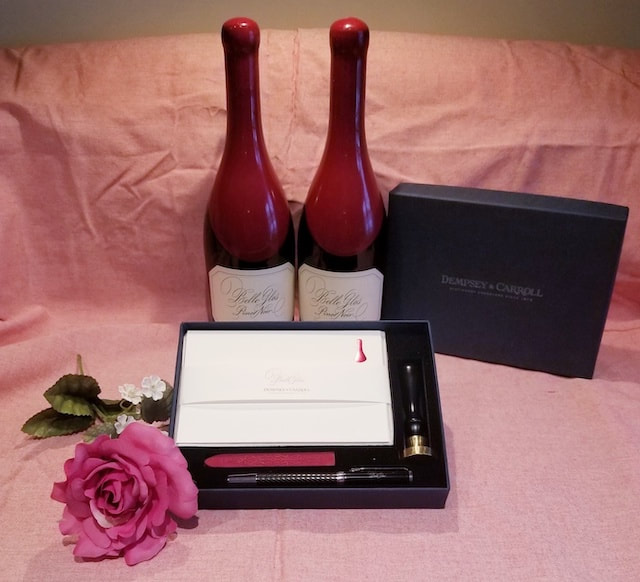
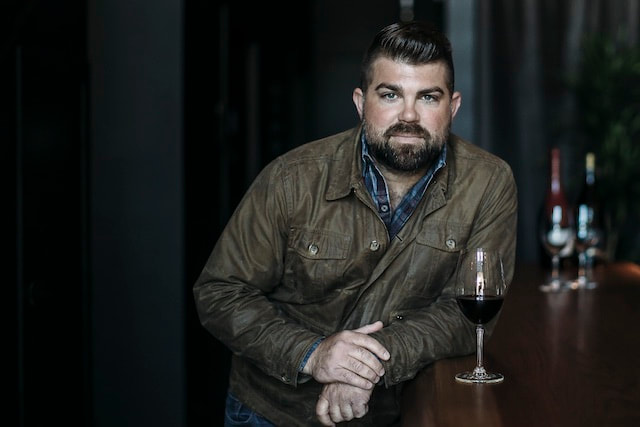
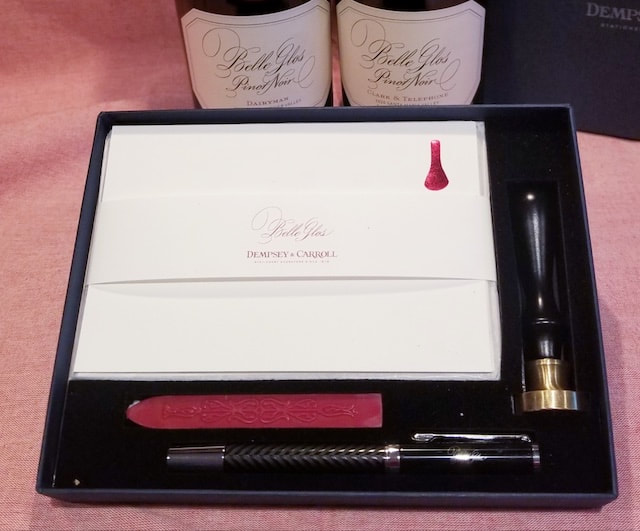
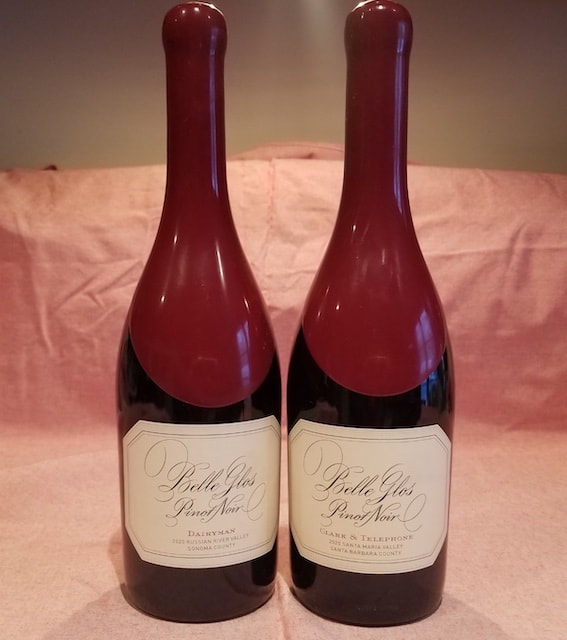
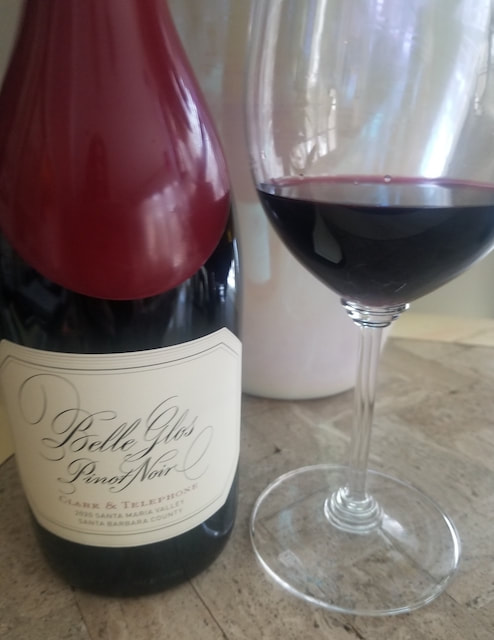
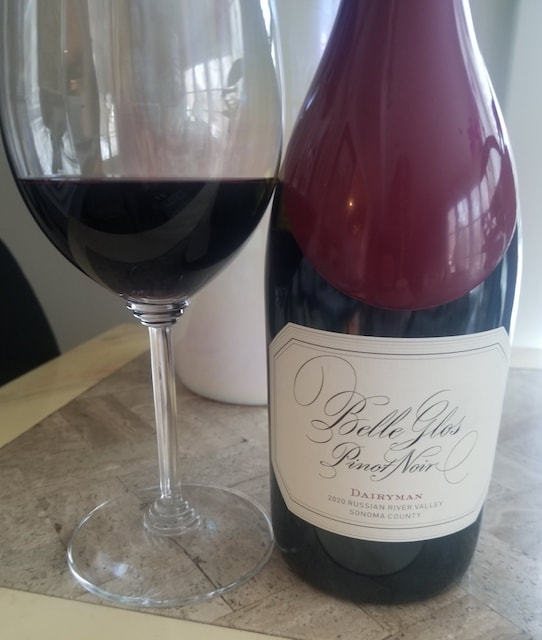
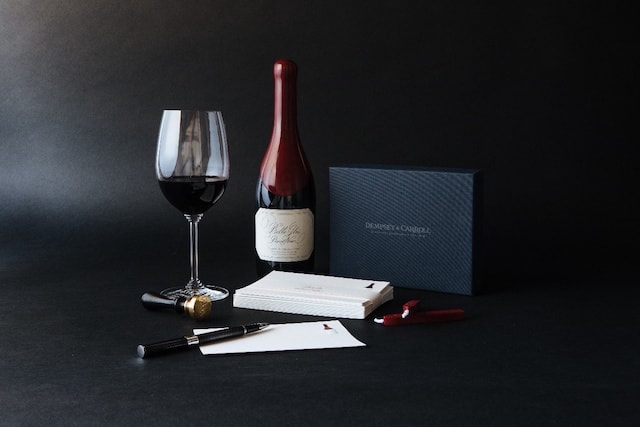

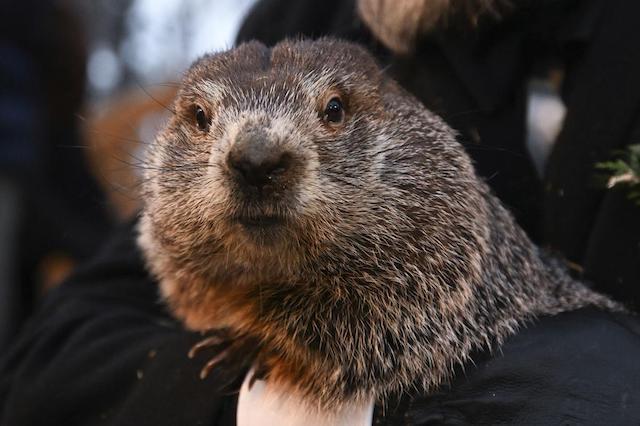
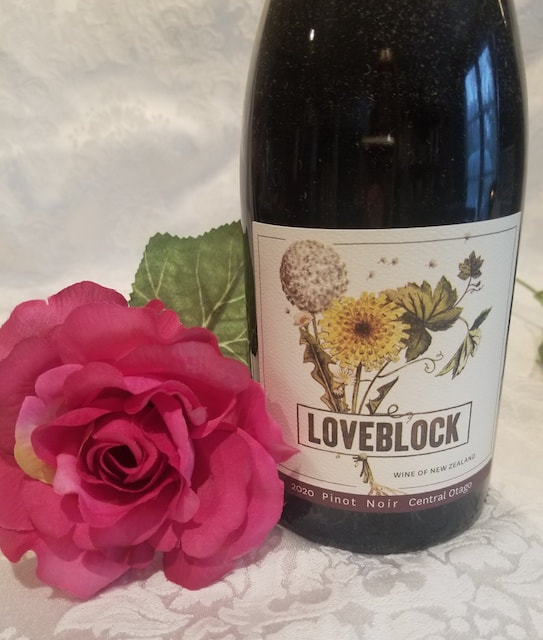
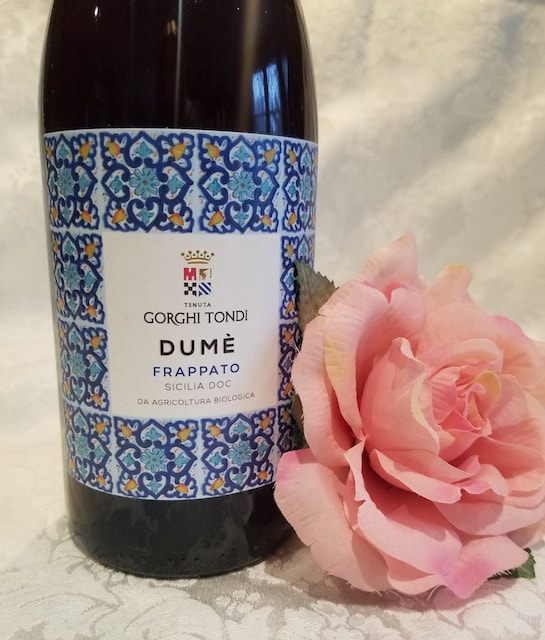
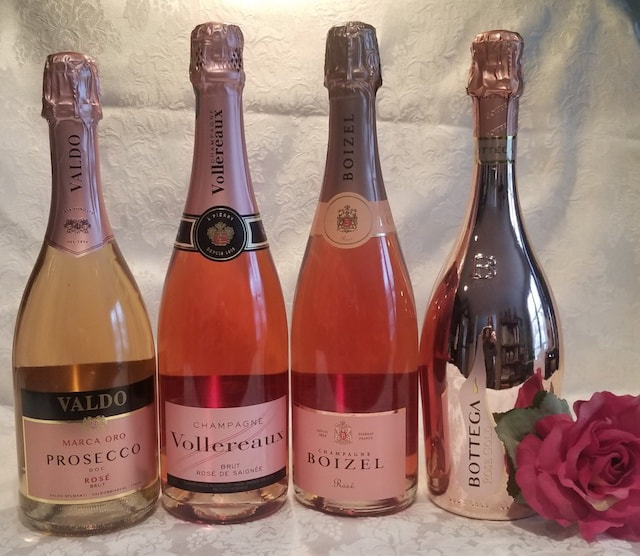
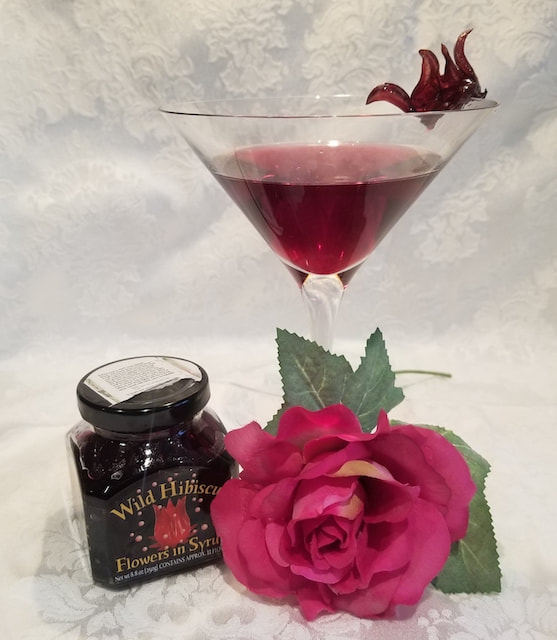
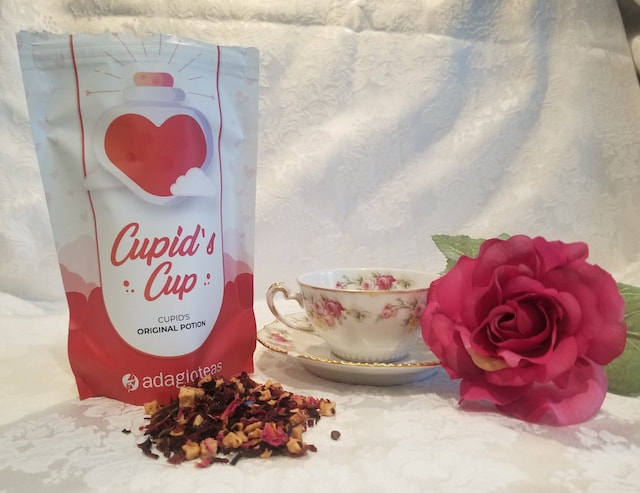
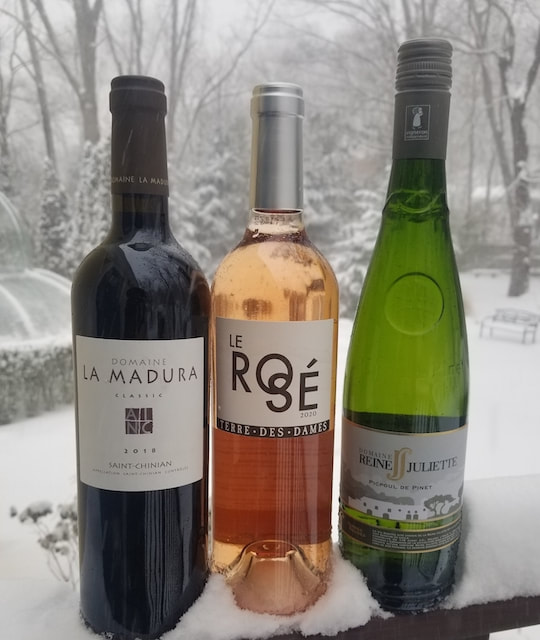
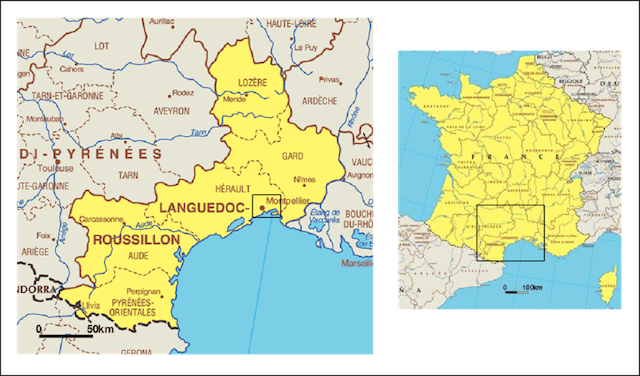
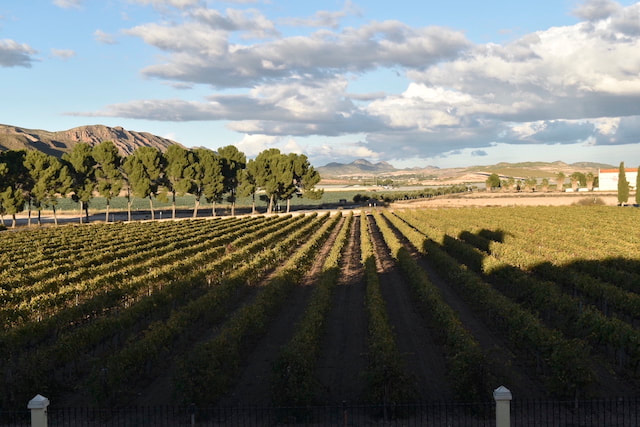
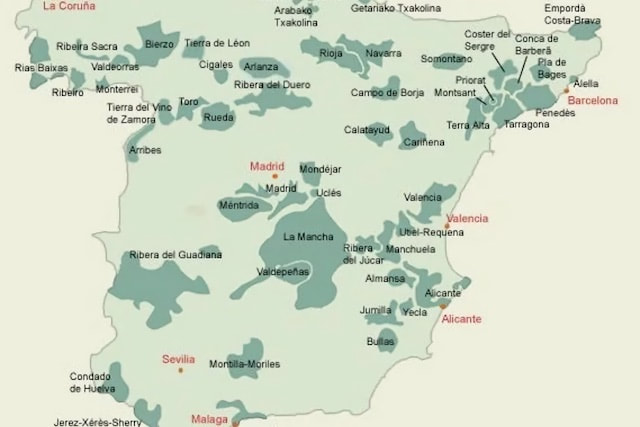
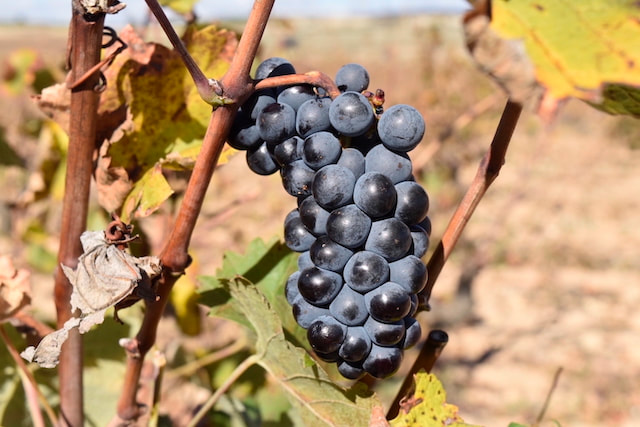
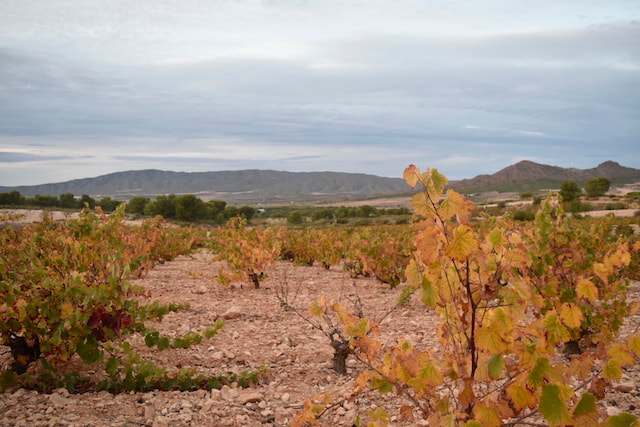
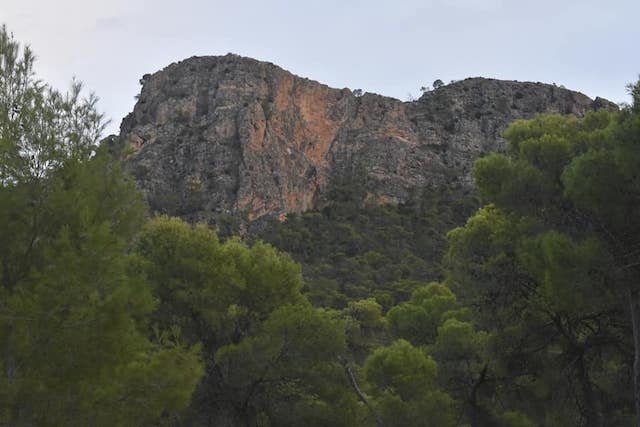
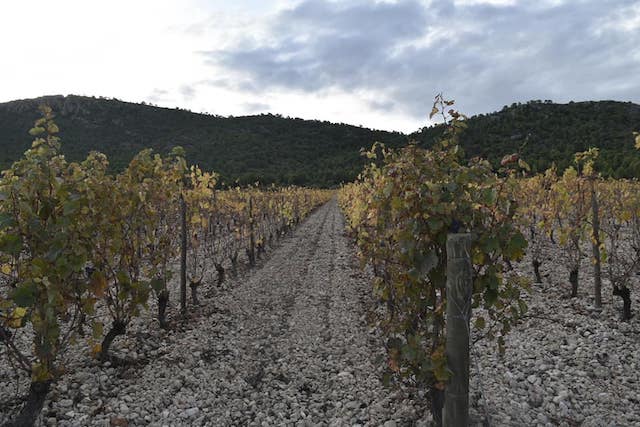
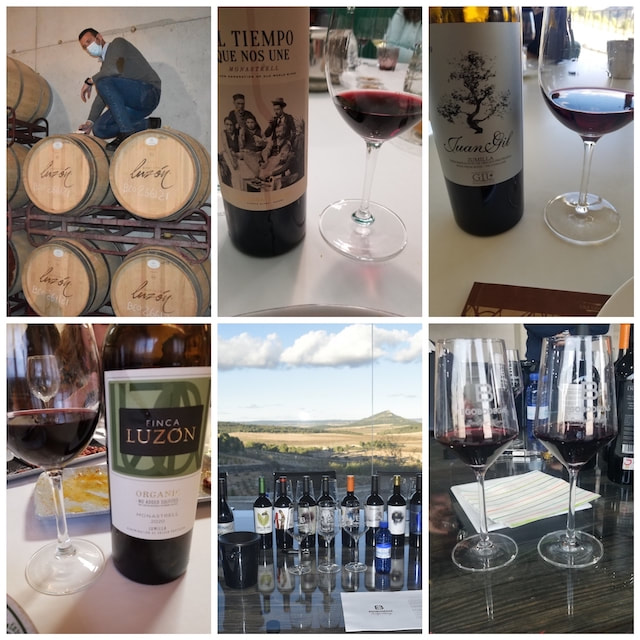
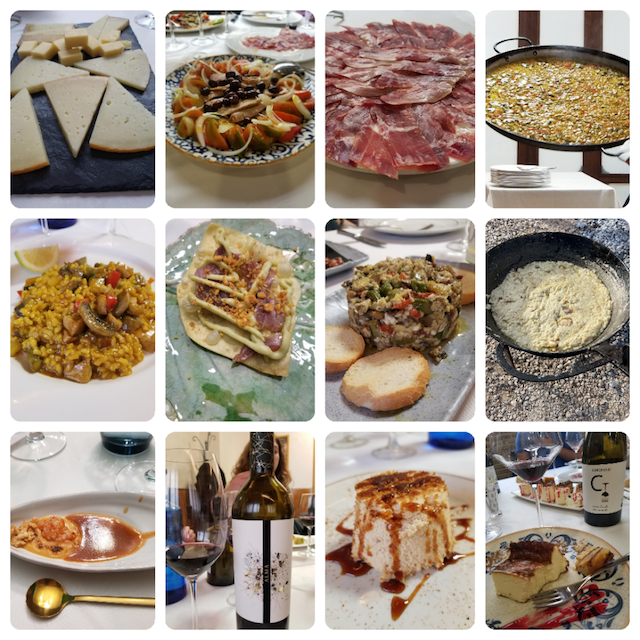
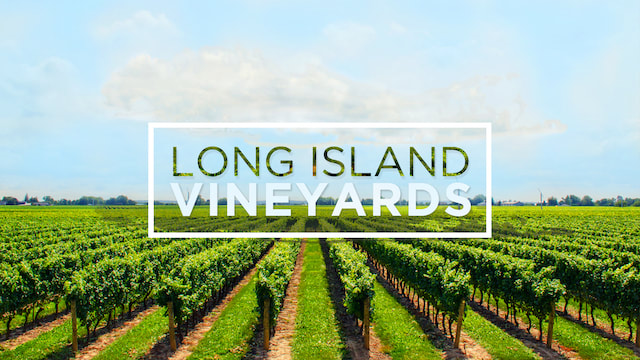
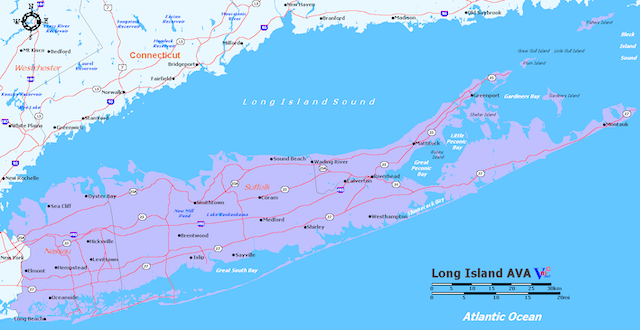
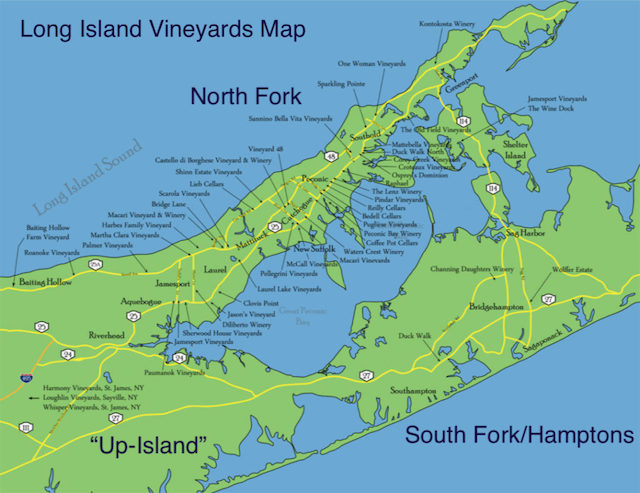
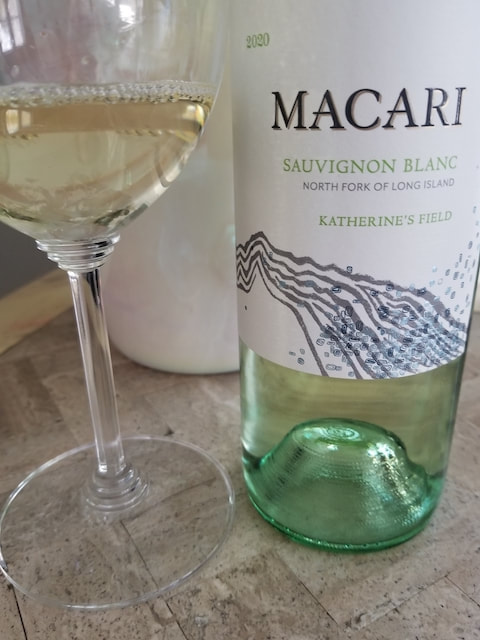
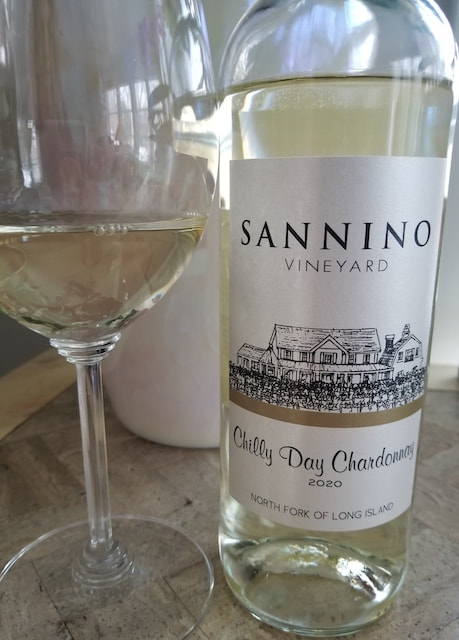
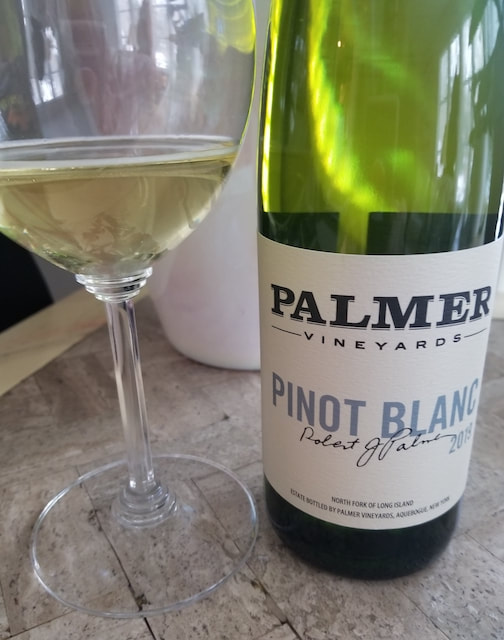
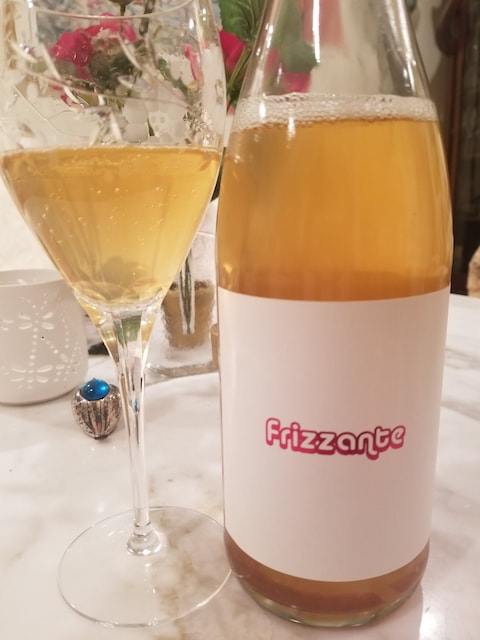
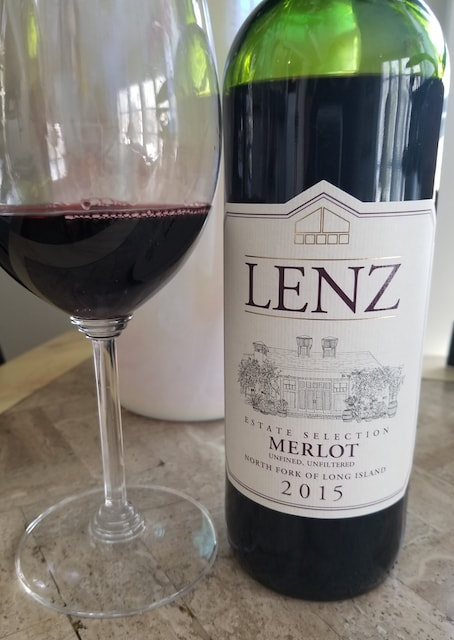
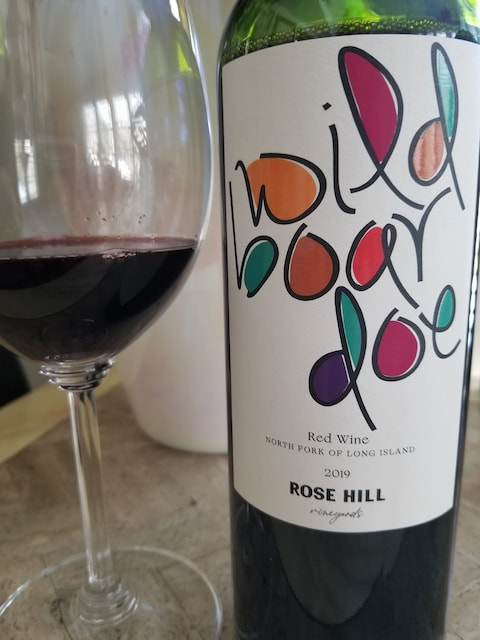
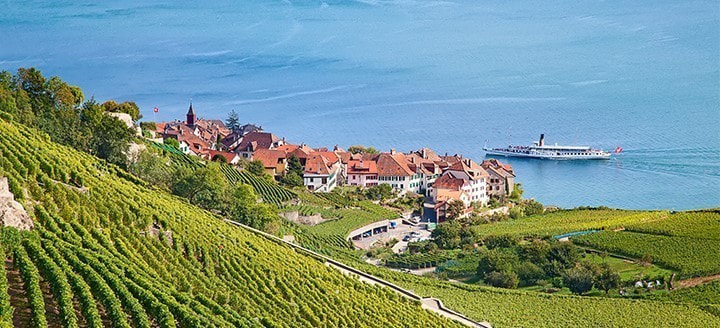

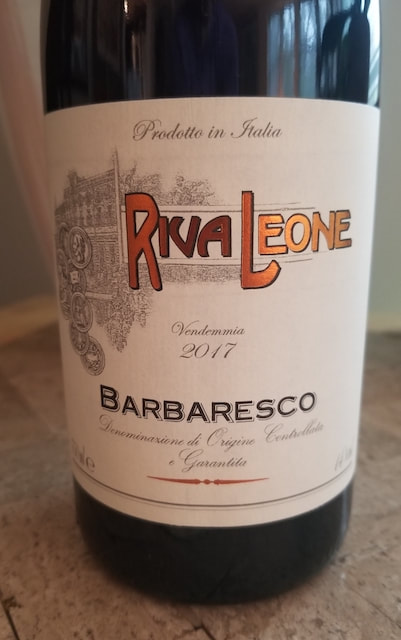
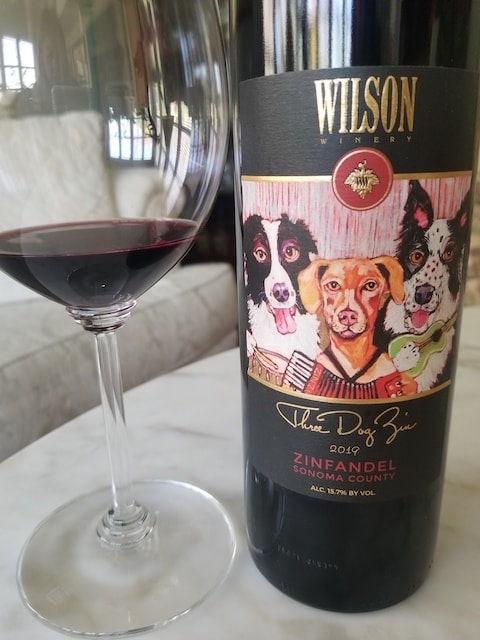
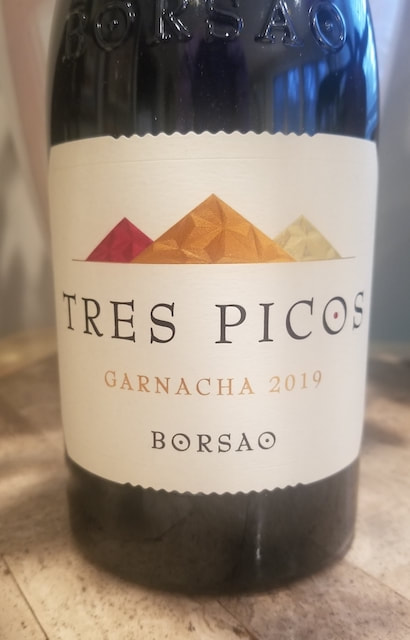
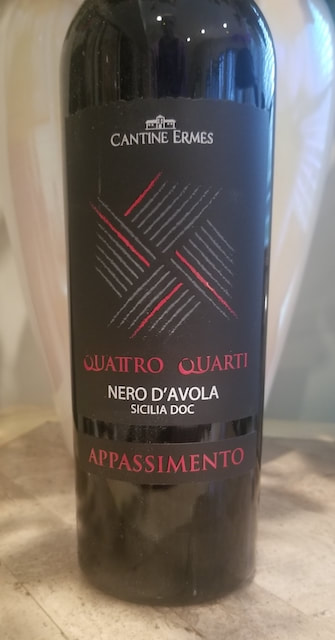
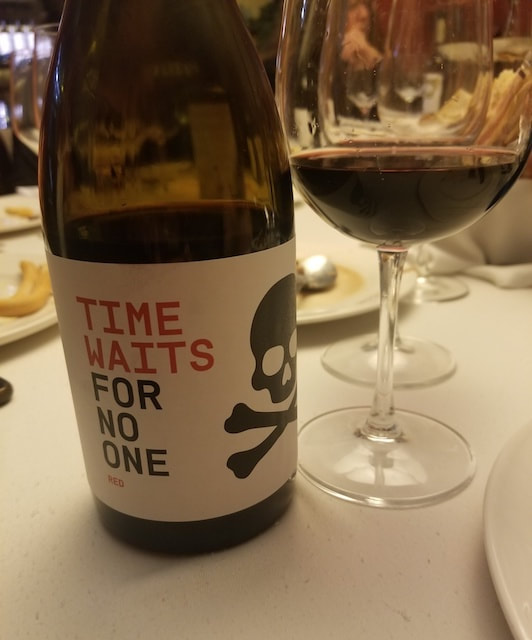
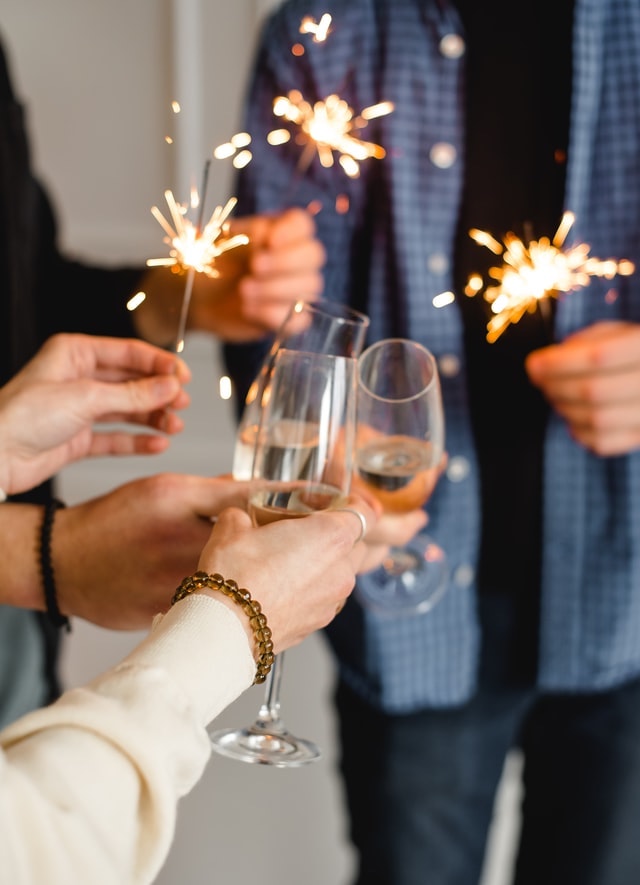
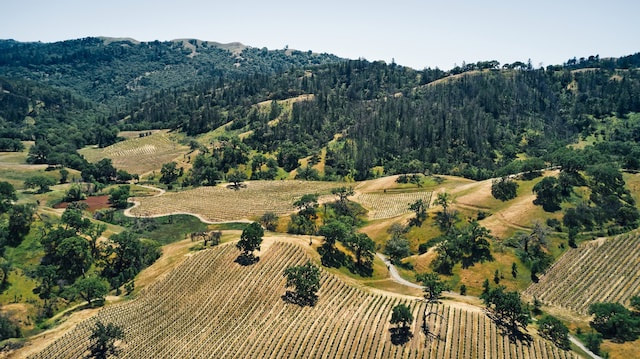
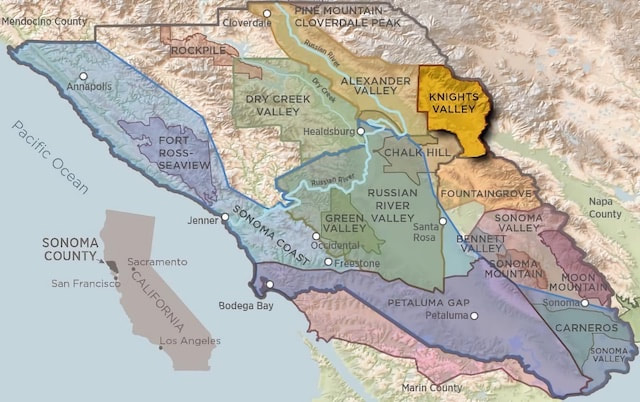
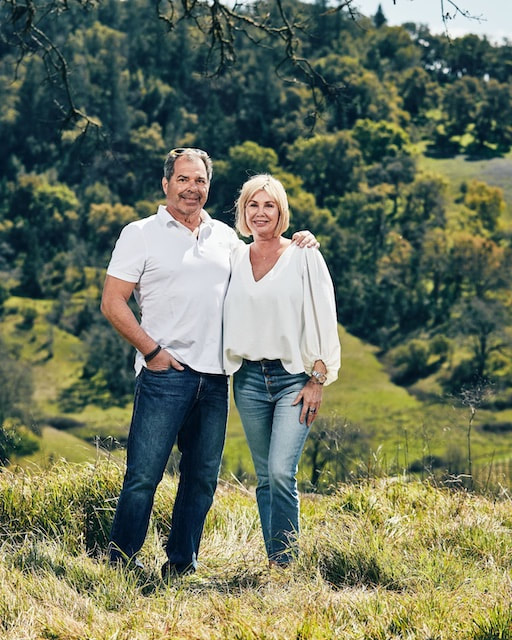
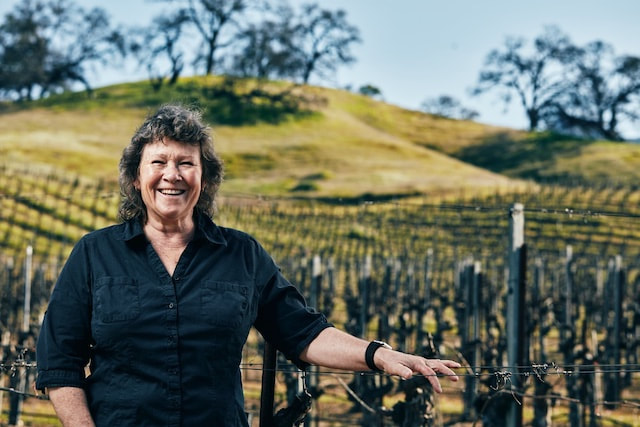
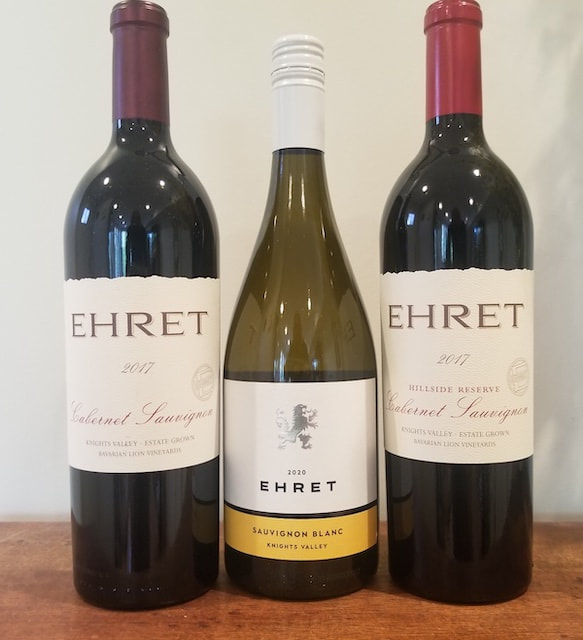
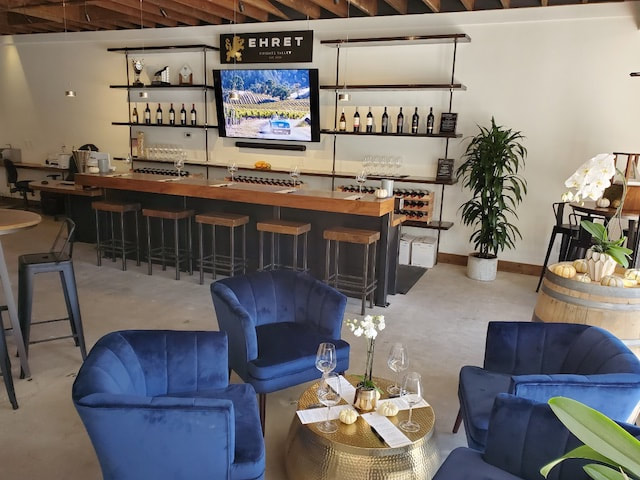








 RSS Feed
RSS Feed